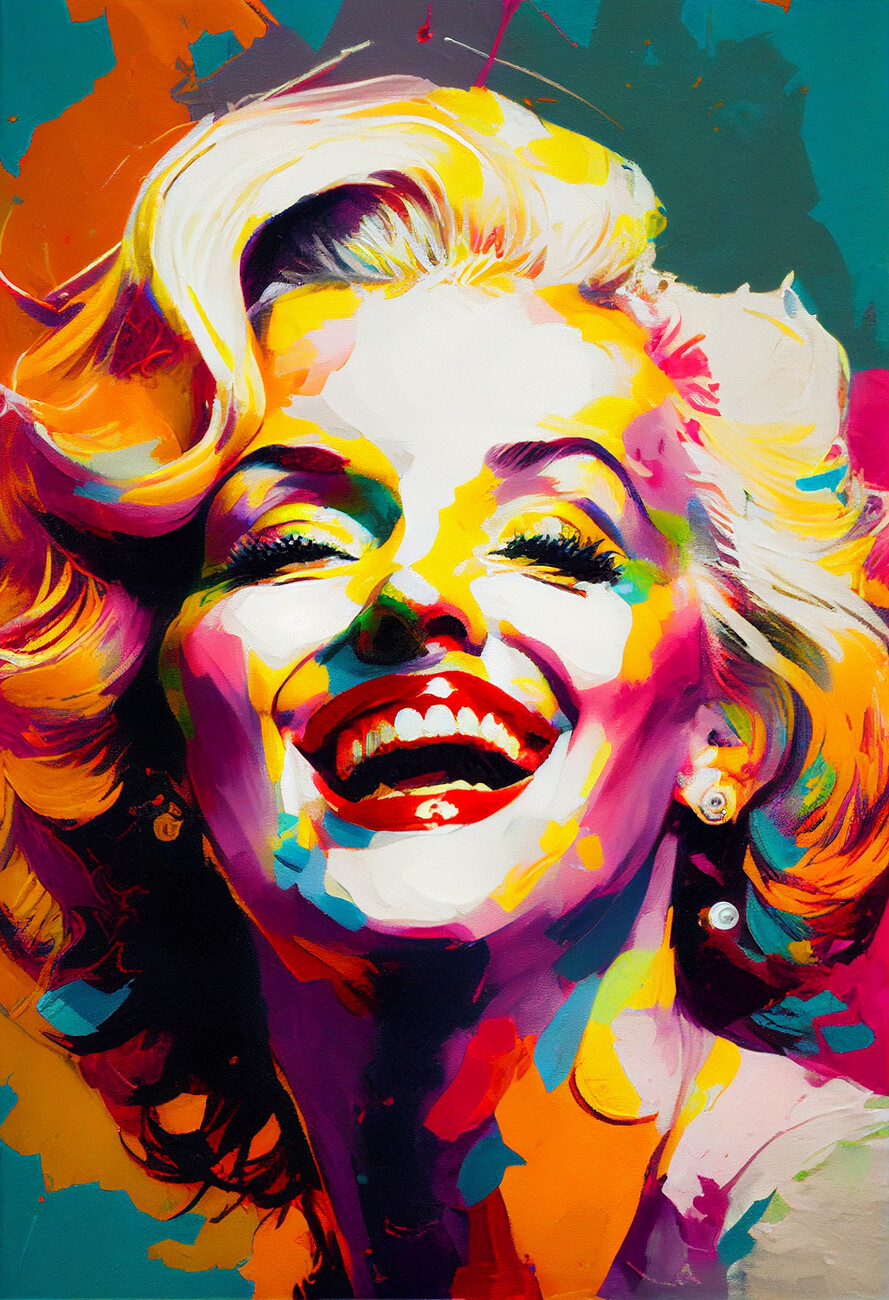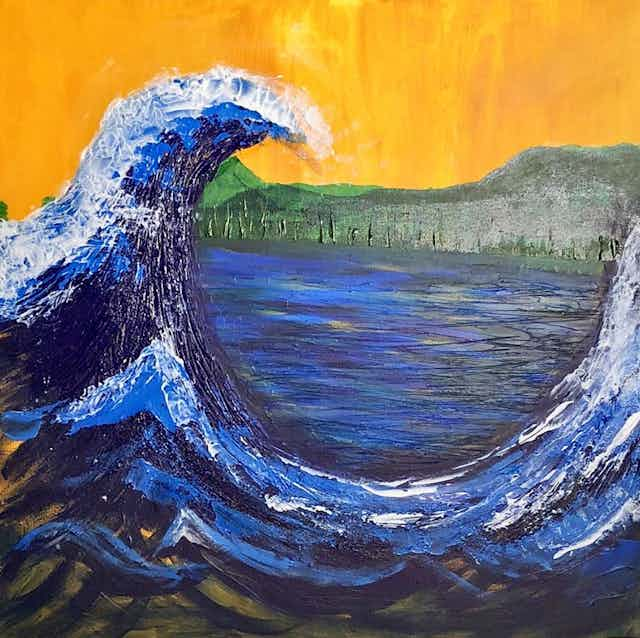Introducing one of the most Intriguing Trump Art Parts of the Years
Starting an Aesthetic Trip With the Lyrical Interpretations of Nature in Impressionist Landscapes
Each brushstroke, each play of light and darkness, and each color option in their works speaks quantities about the artists' deep link to nature and their capacity to translate its charm onto the canvas. As we discover the lyrical interpretations of nature in Stylist landscapes, we are welcomed to immerse ourselves in a globe where fact and feeling intertwine, using a glance into the musicians' profound admiration for the natural world.
The Captivating Brushstrokes of Claude Monet
Claude Monet's proficiency of brushstrokes transcends simple method, imbuing his landscapes with an aerial top quality that fascinates and astounds visitors - trump art. His ingenious use shade and light, combined with his distinctive brushwork, creates a feeling of movement and life within his paints. Monet's prominent collection of jobs showing water lilies and his renowned haystacks showcase his capacity to record the fleeting impacts of light and ambience

Checking Out Light and Shadow With Camille Pissarro
Symbolizing a similar respect for the interaction of light and shadow, Camille Pissarro's artistic vision unfolds as an unified expedition of the environment's luminous nuances. Pissarro, a crucial number in the Impressionist activity, masterfully captured the vibrant relationship in between light and darkness in his landscapes. His proficient use of color and brushwork allowed him to convey the refined changes in light that define different times of day and periods.
Pissarro's paintings commonly feature spotted sunshine filtering system via leaves, casting intricate patterns of light and darkness on the earth listed below. In jobs such as "Hoar Frost, the Impact of Snow, Pontoise," Pissarro skillfully depicts the crisp illumination of winter months sunlight juxtaposed with the awesome darkness that define the snowy landscape. By accepting both light and darkness in his structures, Pissarro welcomes audiences to immerse themselves in the natural elegance and short-term results of light worldwide around them.

Via Pissarro's works, we are advised of the transformative power of light and darkness, welcoming us to stop briefly and appreciate the fleeting moments of elegance existing in the day-to-day landscapes that border us.
A Harmony of Colors by Edgar Degas
Edgar Degas manages a vivid harmony of shades in his skillful art work, instilling his compositions with a vibrant interaction of colors that captivate the visitor's stare. Known mostly for his ballet professional dancers and intimate scenes of Parisian life, Degas expertly adjusted colors to communicate state of mind and motion in his paintings. trump art. His use vibrant, contrasting shades and subtle tonal variations created a sense of deepness and vibrancy within his works
Degas' color palette commonly contained abundant blues, deep eco-friendlies, and cozy oranges, which he applied with positive brushstrokes to capture the significance of his topics. Whether depicting a ballerina mid-performance or a group of good friends conversing at a cafe, Degas' colors not just illustrated the scene but also evoked a sense of feeling and power.
Moreover, Degas' experimentation with light and shadow included an extra layer of complexity to his color make-ups, enhancing the general ambience of his paintings (trump art). Via his skillful manipulation of color, Degas developed a visual harmony that proceeds to resonate with audiences today
Exploring Nature's Serenity With Berthe Morisot
Berthe Morisot's imaginative vision provides a serene departure from the lively shade symphonies of Edgar Degas, as she catches the tranquility of nature in right here her evocative landscapes. Understood for her click here now delicate brushwork and intimate representations of daily life, Morisot's landscapes exude a sense of tranquility and consistency.
Morisot's paintings commonly feature soft, soft tones that share a sense of peace and peacefulness. Her jobs, such as "The Cradle" and "Summer season's Day," display her capability to record the refined beauty of nature in a manner that is both contemplative and relaxing to the audience.
Unlike several of her Stylist equivalents who concentrated on vibrant colors and dynamic make-ups, Morisot preferred to create gentle, introspective scenes that invite the audience to mirror and pause. Through her masterful usage of light and darkness, Morisot produces a feeling of harmony that reverberates with the visitor on a deep psychological degree.
The Emotional Landscapes of Vincent Van Gogh
Vincent Van Gogh's landscapes clearly communicate a depth of emotion via their vibrant brushwork and meaningful use shade. The Dutch post-impressionist artist is renowned for his ability to capture raw and extreme emotions in his paints, going beyond conventional depictions of nature. Van Gogh's tumultuous individual life, marked by psychological health struggles, greatly affected his art, infusing his landscapes with a feeling of anxiousness, moody, or vitality.
In jobs such as "Starry Night" and "Wheatfield with Crows," Van Gogh's swirling brushstrokes and lively color choices evoke an extensive psychological response from viewers. The unstable skies and agitated landscapes in his paints reflect his inner chaos and emotional disturbance, welcoming customers to explore the intricacies of his mind.
Van Gogh's unique visual language, defined by exaggerated viewpoints and vibrant use color, develops landscapes that reverberate with visitors on a deeply emotional level. Via his art, Van Gogh invites us to see nature not equally as an outside reality however as a mirror of our innermost feelings and feelings.
Final Thought
Finally, the impressionist landscapes of artists such as Claude Monet, Camille Pissarro, Edgar Degas, Berthe Morisot, and Vincent Van Gogh provide a distinct and captivating aesthetic analysis of nature. Through their use of brushstrokes, light, emotion, and shade, these artists have actually created a harmony of photos that evoke a feeling of calmness and charm in the all-natural world. Their works continue to influence and enchant viewers with their lyrical analyses of the landscapes around us.
Each brushstroke, each play of light and shadow, and each color choice in their jobs talks quantities concerning the artists' deep connection to nature and their capability click resources to equate its elegance onto the canvas. His cutting-edge use of shade and light, combined with his distinct brushwork, creates a sense of motion and life within his paintings. His skilled use of shade and brushwork enabled him to share the refined shifts in light that define various times of day and seasons.
